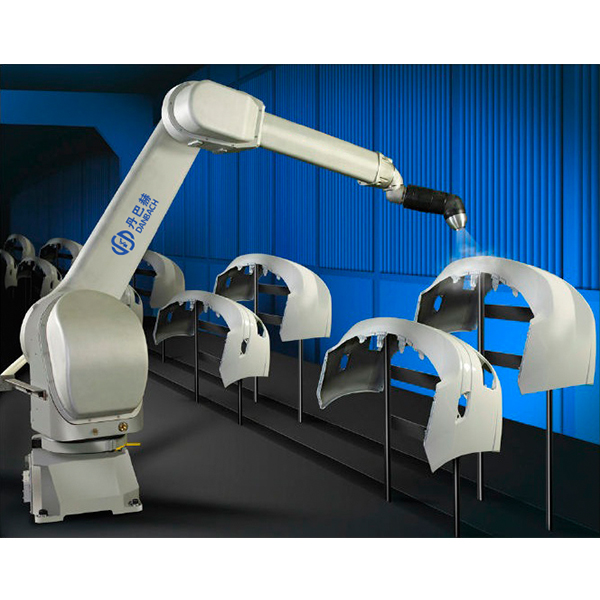PRODUCT CATEGORIES
CONTACT US
DANBACH ROBOT JIANGXI.INC. Phone:0086-18801818975Tel:0086-0791-88133135
Fax:0086-0791-88221576
E-mail:info@dbhrobot.com
Address:Nanchang High - tech Zone Innovation No. 811
Technical requirements of Ceramic painting robot automatic glaze production line
DANBACH ROBOT
First, the use of automatic glazing painting robot equipment:
Used for glazing of the outer surface of ceramic products.
Second, the spraying painting robot glaze process:
Manual feeding - workpiece preheating - mold protection - glazing - drying - manual cutting - mold cleaning.
Third, technical requirements:
The product specifications are OD50-200 mm, height 50-200mm, hollow ceramic tube, product density 3.7g/cm3. Transport the product with a circular transmission line. Characteristics of glaze slurry: specific gravity 1.5-1.8. The thickness of the glaze layer is 0.1~0.3mm, and the difference of the thickness of the glaze layer on the surface of the same porcelain piece does not exceed 0.05mm. The painting robot weight of the glaze layer is automatically detected, displayed and alarmed. The glazing process is fully automated. Automatic glazing equipment efficiency: >5pcs/min. During the glazing process, the muzzle will block and there will be a wiping action. The painting robot workpiece needs to be preheated at a temperature of 0~60 °C (the temperature must be adjusted at 0-60 °C after the porcelain has passed through the preheating zone) and can be adjusted.

The surface of the painting robot after glazing is glazed, glazed and uniform in surface color. Mold protection does not allow the end face and inner wall of the product to be glazed. After the glaze is sprayed, the drying temperature is adjustable from 0 to 150 °C. Mold cleaning can achieve the best automatic cleaning.
Previous:The performance advantages of Industrial intelligent spray robot
next:Palletizing robot on food and beverage production line

